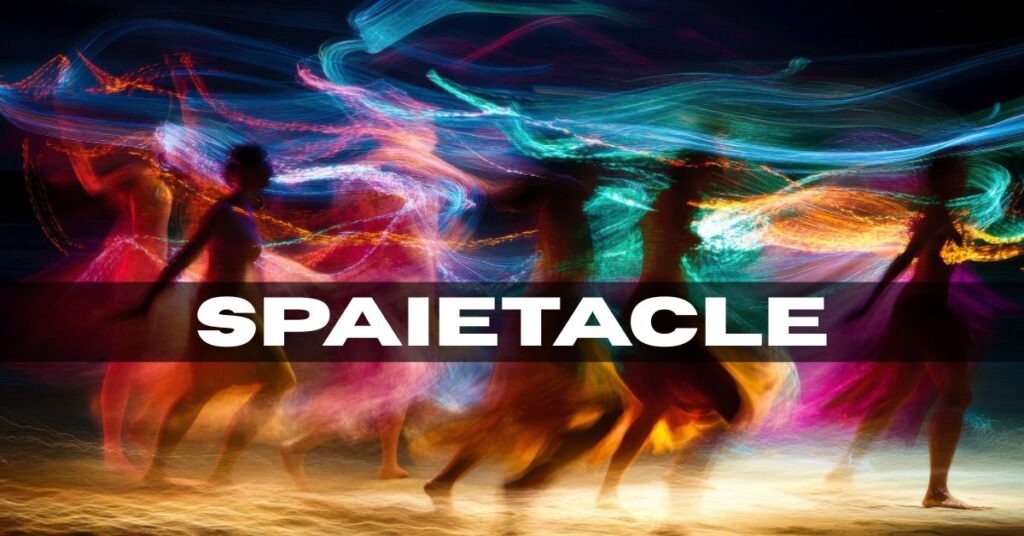Introduction to Spain and Its Culture
Spain is a place of vivid hues, illustrious customs, and engrossing tales. Through centuries-old art, dance, and music, its culture is alive and vibrant. We get right to the heart of what makes Spain so alluring as we discuss spaietacle, a distinctive fusion of Spanish spectacle.
Every location provides a window into a world where history and modernity coexist, from the dramatic flair of bullfighting in Madrid to the rhythm of flamenco in Andalusia. In addition to performances, this cultural fabric features deeply ingrained traditions that bind people together across generations.
Come along with us as we examine the origins and current significance of spaietacle a complex journey brimming with emotion, history, and an unwavering love of performance!
The History of Spectacle in Spain
In Spain, spectacle has a long history that dates back to antiquity. The Romans invented theatrical presentations, which enthralled spectators by fusing drama with ornate imagery.
Mystery plays and religious festivals helped to shape spectacle during the Middle Ages. Dramatic storytelling and colorful costumes were common features of these occasions. They brought communities together around common values.
Performance art reached its zenith during the Spanish Golden Age. With the introduction of nuanced characters and captivating stories, playwrights such as Lope de Vega revolutionized the theatrical environment.
The displays became even more spectacular with the introduction of Baroque culture. Both public squares and opulent mansions were thriving hubs for artistic expression. Every event offered a platform for artistically veiled social critique.
Modern spaietacle representations that still captivate residents and tourists today were made possible by the gradual blending of these ancient forms with fresh inspirations.
Traditional Spanish Performances and Festivals
Spain’s distinctive festivals and performances weave a tapestry of colorful traditions. Every location has its own unique style, which makes every celebration unique yet equally fascinating.
Consider flamenco as an example. With its precise footwork and emotive gestures, this passionate dance, which has its origins in Andalusia, captures the essence of Spanish culture. The dancers are accompanied by the guitar, which creates an entrancing mood that is difficult to ignore.
Then there are fiestas like Valencia’s Las Fallas or Buñol’s La Tomatina. These celebrations, which feature lively parades, pyrotechnics, and delectable food, highlight Spain’s lighthearted nature. As they celebrate life itself, participants give their all to the celebrations.
Additionally, Semana Santa (Holy Week) showcases both artistic processions and long-standing religious customs. Somber music reverberates through the small alleyways as elaborate floats transport sculptures decorated with flowers.
Both residents and visitors are encouraged to fully immerse themselves in Spain’s rich cultural legacy through these traditional acts.
Modern Day Spectacle in Spain: From Bullfighting to Flamenco
Spain’s contemporary spectacle is a colorful tapestry made from both innovation and tradition. Bullfighting is still a divisive but legendary event, frequently considered both an art and a sport. Audiences are drawn into the drama that takes place in the arena by the matadors’ enthusiasm.
Another notable manifestation of Spanish culture is flamenco. With its complex footwork and heartfelt guitar tunes, this dance style is pulsating with passion. It uses music and dance to communicate stories, stirring strong emotions in both performers and audience members.
These spectacles are often displayed during street festivals across cities. Both residents and visitors are encouraged to join in the celebration by the vibrant parades with costumes.
Spain strikes a balance between its rich legacy and modern influences, as seen by the contrast between classic forms like bullfighting and vibrant performances like flamenco. Every spectacle unites people in common sensations of delight and introspection while offering something special.
Influences on Spanish Spectacle from Other Cultures
For a long time, Spanish spectacle has been a mashup of many cultural elements. Flamenco now is infused with the complex dance and music forms that the Moors, who dominated portions of Spain for centuries, left behind.
In terms of theater, Spanish plays borrowed from Italian commedia dell’arte and classical Greek dramas. These factors influenced the development of storytelling strategies that are still relevant in contemporary productions.
Additionally, Spanish festivities have included lively dances and rhythms from Latin American traditions. Events like La Tomatina and Semana Santa are enhanced by this combination, which adds vibrant manifestations that go beyond conventional limits.
Pop culture from today has also contributed. Spanish creative expressions are influenced by global influences, which change traditional forms while preserving essential characteristics.
Spaietacle is a live tale weaved from several traditions throughout time and space, not merely an exhibition, thanks to this blending of influences.
How Technology Has Impacted Spanish Spectacle
Spanish spectacle has seen a transformation thanks to technology. With the advent of virtual reality experiences and live-streaming conventional festivals, audiences may now interact with performances in a way that has never been possible before.
Social media sites are now essential for advertising events and connecting with a larger audience. Events like bullfighting or flamenco performances draw spectators from all over the world, not just from nearby communities.
The quality of output is also improved by digital instruments. Simple performances are transformed into remarkable spectacles with the application of sophisticated lighting and sound equipment. Modern audiences are captivated by the inventive methods in which artists may exhibit their talents.
Additionally, anybody may learn traditional dances or music genres at home with the help of internet lessons. A new generation of people interested in conserving and advancing Spain’s rich cultural legacy is fostered by this accessibility.
Essentially, technology serves as a bridge between innovation and tradition, revitalizing long-standing customs while guaranteeing their continued applicability to next generations.
The Significance of Spectacle in Contemporary Spanish Society
In modern Spanish culture, spectacle is essential because it serves as a mirror reflecting cultural identity. These gatherings, which range from colorful festivals to customary performances, foster community bonds and honor common heritage.
The spectacle becomes a creative canvas in vibrant towns like Barcelona and Seville. Artists captivate both residents and visitors by fusing traditional customs with contemporary ideas.
Additionally, spectacle promotes societal harmony. Regardless of age or background, events unite people. It’s about fostering togetherness by shared experiences that go beyond daily living, not merely amusement.
It is also impossible to ignore the economic consequences. Every year, millions of people attend festivals, which preserve cultural customs while enhancing local economies.
The importance of spectacle—a dynamic force that improves lives and boosts national pride—remains constant as Spain’s culture and society continue to change.
Conclusion: Why Spaietacle Continues to Thrive and Fascinate People Worldwide
Spaietacle, which combines centuries of history with contemporary elements, symbolizes the lively spirit of Spain. Both residents and visitors are enthralled by this singular cultural phenomenon, which transports them to a realm where modern arts and history coexist.
Spaietacle’s versatility is what makes it so appealing. Every act, from the dramatic intensity of bullfighting to the flaming passion of flamenco, tells a tale that is profoundly ingrained in Spanish society. These spectacles represent creative expression, societal ideals, and collective identity in addition to being forms of entertainment.
As our linked world continues to be shaped by globalization, spaietacle changes while maintaining its core characteristics. Traditional performances are enhanced by the introduction of fresh concepts from different civilizations without overpowering their origins. Technology is also essential in this case since virtual experiences enable audiences all over the world to interact with these fascinating art forms in a way that has never been possible before.
People are drawn to spaietacle because of its aesthetic appeal as well as what it stands for: community connection, inventiveness, and perseverance. It stimulates interest in Spain’s past and future while extending an invitation to everyone to witness its rich legacy firsthand.
Spaietacle continues to captivate people year after year as customs change and take on new meanings; this is evidence of the ability of culture to bring people together across boundaries through common celebrations of life.




